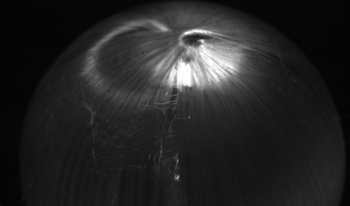
Regression-based radiance field reconstruction strategies, such as neural radiance fields (NeRFs) and, physics-based, 3D Gaussian splatting (3DGS), have gained popularity in novel view synthesis and scene representation. These methods parameterize a high-dimensional function that represents a radiance field, from a low-dimensional camera input. However, these problems are ill-posed and struggle to represent high (spatial) frequency data; manifesting as reconstruction artifacts when estimating high frequency details such as small hairs, fibers, or reflective surfaces. Here we show that classical spherical sampling around a target, often referred to as sampling a bounded scene, inhomogeneously samples the targets Fourier domain, resulting in spectral bias in the collected samples. We generalize the ill-posed problems of view-synthesis and scene representation as expressions of projection tomograpy and explore the upper-bound reconstruction limits of regression-based and integration-based strategies. We introduce a physics-based sampling strategy that we directly apply to 3DGS, and demonstrate high fidelity 3D anisotropic radiance field reconstructions with reconstruction PSNR scores as high as 44.04 dB and SSIM scores of 0.99, following the same metric analysis as defined in Mip-NeRF360.

Omnidirectional images (ODIs), also known as 360-degree images, enable viewers to explore all directions of a given 360-degree scene from a fixed point. Designing an immersive imaging system with ODI is challenging as such systems require very large resolution coverage of the entire 360 viewing space to provide an enhanced quality of experience (QoE). Despite remarkable progress on single image super-resolution (SISR) methods with deep-learning techniques, no study for quality assessments of super-resolved ODIs exists to analyze the quality of such SISR techniques. This paper proposes an objective, full-reference quality assessment framework which studies quality measurement for ODIs generated by GAN-based and CNN-based SISR methods. The quality assessment framework offers to utilize tangential views to cope with the spherical nature of a given ODIs. The generated tangential views are distortion-free and can be efficiently scaled to high-resolution spherical data for SISR quality measurement. We extensively evaluate two state-of-the-art SISR methods using widely used full-reference SISR quality metrics adapted to our designed framework. In addition, our study reveals that most objective metric show high performance over CNN based SISR, while subjective tests favors GAN-based architectures.